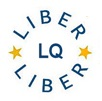Dealing with maps: the identification of intellectual responsibilities and the application of relator codes
DOI:
https://doi.org/10.18352/lq.8048Keywords:
map cataloguing, authorship, relator codesAbstract
Treatment of information about those responsible for the intellectual content of work is one of the most complicated tasks in the bibliographic description of cartographic material. There are particular characteristics that make it difficult to apply some general rules laid down by technical cataloguing manuals for recording this information. The classic situation typified by the monographs — "an author and an editor" or "multiple authors and an editor" — differs from the large quantity of cartographic resources which have various contributors, with distinct functions, who contribute to the production of the resource. Field work, compilation of information and its standardization or homogenization, drawing, engraving or printing are some of the tasks often recorded on the maps associated with different individuals or organizations. In such cases, the problem is to select the person who should be considered as the principal author, determining with this choice the main entry of the record, and who should be chosen as co-authors or secondary authors. It is often difficult to know whether or not the functions performed by each one, or even by only one individual, deserve the epithet of "author" of the map.
In cartographic material a great variety of situations and many aspects can be taken into account, which allows evaluating the different solutions to problems that complicate documental treatment. Therefore, maps, loose or forming homogeneous groups, the nature of represented information, the time and institutional context in which they are produced and published, as well as whether they are printed or digital or manuscripts, influence the procedure for giving the authorial statement.
Modern maps (produced using digital tools), although they confront librarians with problems about the determination of access points, may be easier to treat than those created prior to the nineteenth century. However, this is not a rule: old maps are not always more difficult to treat than contemporary cartography.
Downloads

Downloads
Published
Issue
Section
License
Copyright (c) 2013 Sandra Domingues

This work is licensed under a Creative Commons Attribution 4.0 International License.





